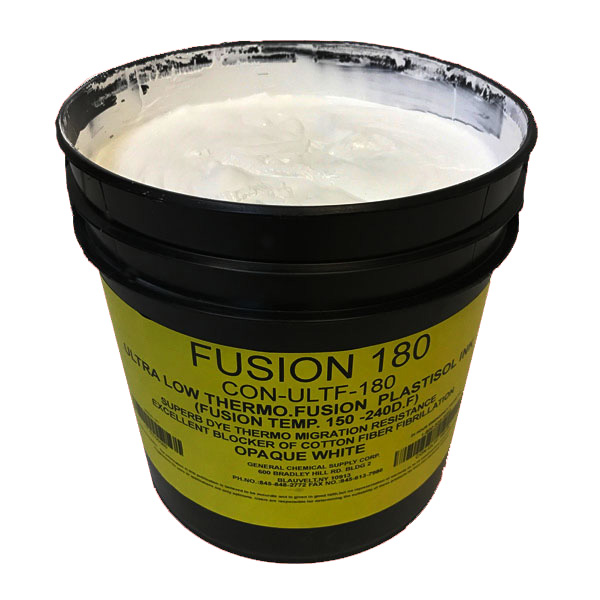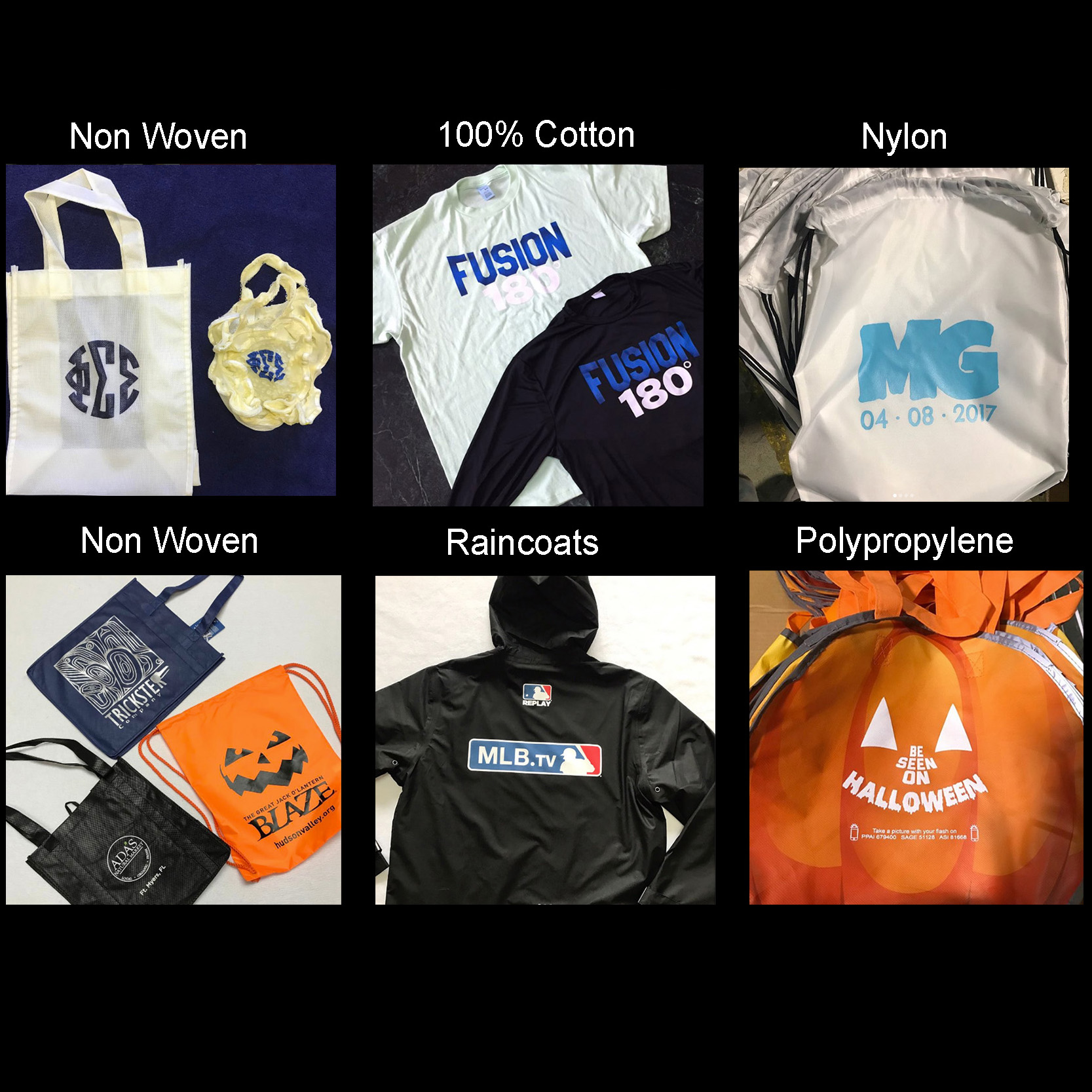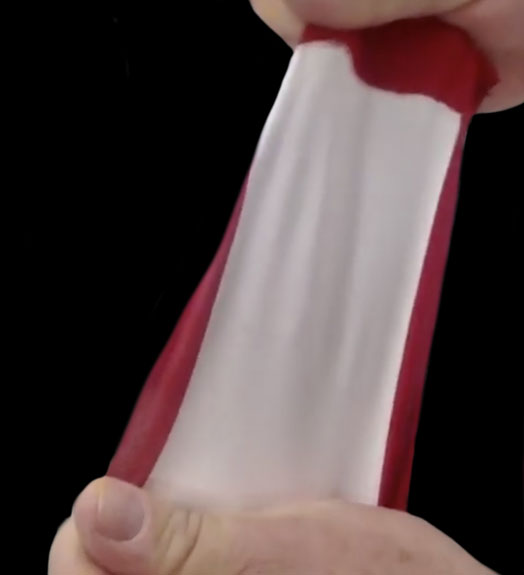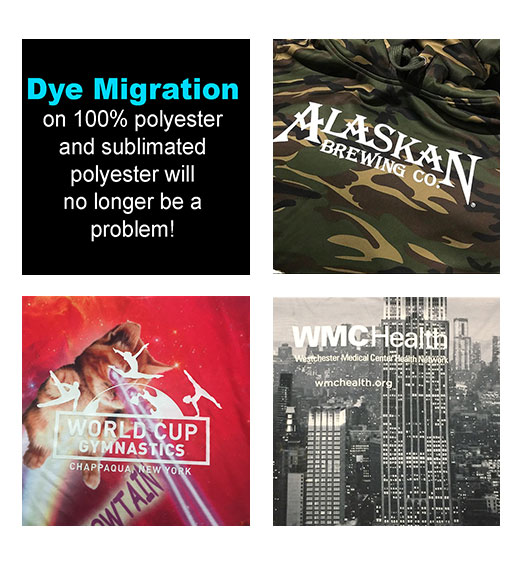LOW CURE INK
Solutions to all of your screen printing problems are here now that we developed Fusion 180° low cure temperature ink. The ink cures at 260°F for through the dryer or with a flash depending on the ink deposit and the type of garment you are printing on.

1. ALL IN ONE
The ink can print on virtually all fabrics including heat sensitive materials: polyester, polypropylene, non-woven, artificial leather, nylon, 100% cotton, and 50/50 sweatshirts.

2. ECO-FRIENDLY
Fusion 180 ink adds miraculous Bio Base to entire ink system. Bio Base makes the ink biodegradable and soft, improving viscosity. Fusion 180 ink with Bio Base remains low cure stays soft longer and flows beautifully through fine meshes without sacrificing coverage. Lowering the temperature of your dryer will not only save energy, but will also reduce energy costs and emissions. In addition, your production will increase and employees will love the cooler shop during the summer months.

3. FEEL/LOOK
The ink is flexible, soft, and has excellent opacity on dark color garments. Not only are Fusion 180° ink prints bright, but the ink is also bleed resistant and crack resistant.

4. DYE MIGRATION
100% polyester dyes tend to turn to gas when they are heated in the dryer causing plastisol ink dye migration problems. Our easy to use ink prevents dye migration on 50/50 sweatshirts, 100% polyester, and sublimated polyester due to the inks blocking capability and low cure temperature.

5. HEALTH ISSUE
The 260-degree cure temperature minimizes air content from PVC polymer and the formation of Hydro-Chloride gas. (HCI) The result is a comfortable breathing and work environment.

6. SHRINKING/MELTING
Fabrics will burn or shrink while flash curing in the conveyor dryer. The low flash temperature reduces the shrinkage of heat sensitive materials and makes it easier to hold registration while printing multi-color jobs. Low temperature ink is an excellent solution for all shrinking fabrics.

SPECIFICATIONS
1. Mesh Range
You can use a low mesh count to a high mesh count. 86/inch to 305/inch (33/cm to 120 cm European) printable without viscosity modification. The more detailed the print the higher the mesh and the more ink deposit the higher the curing temperature.
2. Ink Curing
Proper curing temperature and mesh depends on the thickness of ink deposit, garment, color of garment, artwork, and desired effect. Direct application onto the garment substrates and cures at 180°F (83°C) with 305 mesh/inch no underlay or at 260°F (116°C) with 86 mesh/inch. The ink can also be cured with the flash in 4 seconds at 450°F degrees. (232°C)
3. Flash Cure
The ink gels at low flash temperatures for easy use with multi-color printing. Does not require a catalyst. Does not build up on screen.
4. Application
Can print on any fabric and heat sensitive materials: polyester, soft vinyl material substrate acrylic, polyproplylene non-woven, artificial leather, nylon (polyamide), as well as 100% cotton and 50/50 (sweatshirt)
5. Viscosity
The ink has low viscosity. There is pseudoscience plastic behavior at low temperature. The ink maintains Newtonian Viscosity at room temperature. It can be used through fine meshes.
6. Adhesion
Extraordinary strong on every substrate without a catalyst.
7. Clean up and Maintenance
You may no longer need ink cleaners made with petrochemicals such as blended solvents. To clean the ink you need 5% laundry detergent, 1% to 3% water neutralizer, and 92% water. Low cure ink can bind up in the screen when the pallet is too hot, if you leave the ink in the screen overnight, or if the screen was recently flashed. In order to clear the screen you need to spray reducer into the effected area, flood the screen with ink, and push the ink through the screen with a squeegee onto test print until the area is cleared. Lastly, the ink container should always be covered with a lid.
8. Storage
Always store at cool room temperature below 90°F (32°F. This Series Ink may be crystalized below 40°F. If this happens, increase ink temperature up to 70°F to 80°F by the slow mixing friction.
9. Bleed Resistance / Transfer Ink
Bleed resistance is very high for printing on 100% polyester, nylon and sublimated polyester. The ink can be used for transfers and foil adhesive.